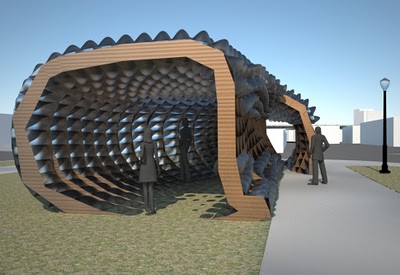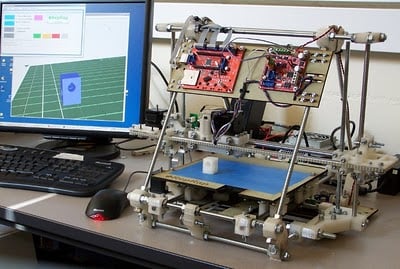The ZER01 Art and Technology Network is preparing for what promises to be a spectacular event in September 2010 in San Jose, California. The event is an art exhibition held every two years, and this year’s theme is “Build Your Own World”. Now that’s the a theme Fabbaloo readers would like to hear more about.
One of the exhibitors will be the BIOS Collective: “BIOS collective is a working group of academic and professional designers exploring the application of biological patterns to architecture.”
We’ve written about their interesting work before.
According to Charles Lee, Co-Founder & President of the Bios Design Collective:
We are hoping for a close relationship with the 3d community to try to help realize our project. The installation is entitled Coloniatechne and it is our hope that when complete it would be the largest collection of 3d printed panels yet assembled. We have budgeted for the purchase of at least three Reprap machines and hope to have them continuously run in a musuem or gallery setting for most of the next year for the final installation in September. Since we have only won the concept design phase of the project the specifics of the where has not been resolved yet. We want to make the production of the panels open to the whole 3d community in the hopes we can achieve the production of all the “Polyps” we need.
The ColoniaTechne project is uses the principles of agent-based self organization to form the structures. While these principles are found in many places within not only nature but also human society, Bios have chosen Coral as the inspiration of the ColoniaTechne project.
Our project proposes an interpretation of the qualities shared between complex biological systems – like coral – and the collaborative distributed networks found in 21st century human electronic culture. To create our project, we will draw from two open-source communities: one centered around the development of the “Replicating Rapid Prototyper” (RepRap) and one centered around the development of software for an open-source microcontroller (Arduino). With the help of these two communities, and SJ Zero-One, we will create a self-organized, interactive sculpture who’s behavior runs on crowd-sourced algorithms.
Bios plans to build a “Pavilion” at a point of high traffic and waiting area for convention commuters, where they will be astonished by the displays. Inside the pavilion unique “polyps” will use genetic algorithm-equipped “Grasshopper” software to develop the objects. However:
Grasshopper, and its companion program Rhino, are both down-loadable as fully functional trial versions, and so are available to anybody with a computer to run them. We will post a base algorithm on our blog, asking people to download and modify it to create their own versions. We will print their designs on our machines, or encourage them to print their own when possible, and drop them off. As our collection of polyps grows throughout the summer, we will add them to the base structure.
They’re still in the early stages of this enormous project, but we thought there are many willing participants in the Fabbaloo sphere that might want to contact Bios to participate. “The project is still in concept design and will definitely develop in the coming months. We are looking for new members to help participate on the project so please feel free to contact Charles, Chris or Jess about possible opportunities and contributions.”



